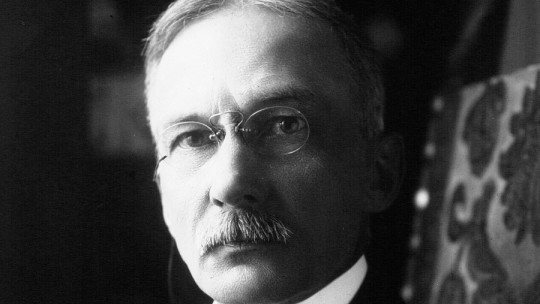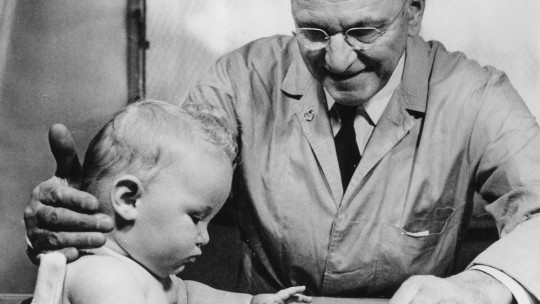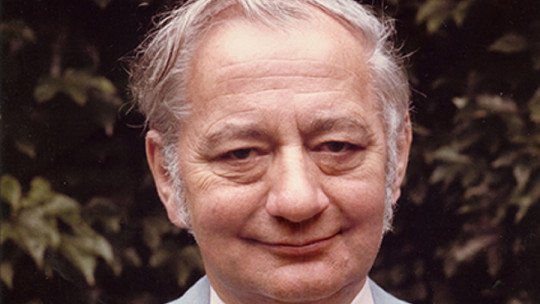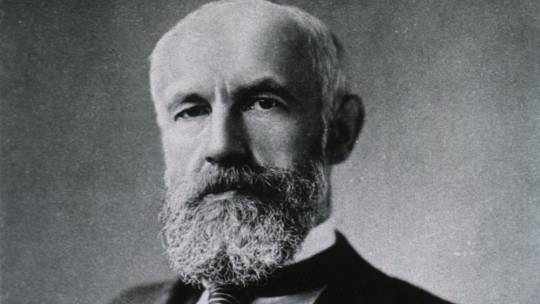
Throughout the second half of the 19th century and the beginning of the 20th, psychology experienced great development thanks to authors such as Baldwin.
This biography of James Mark Baldwin takes a tour of this author’s entire biography to have a better perspective of his life milestones and the most notable contributions that a lifetime dedicated to science allowed him to leave in the fields where he carried out his research.
Brief biography of James Mark Baldwin
James Mark Baldwin was born in 1861 in Columbia, the capital of South Carolina, in the United States of America. It was in this city where he spent his childhood. These were turbulent times in the United States, as the struggle between slaveholders and abolitionists ended up triggering the Civil War between the North and the South.
James’s father played an active role in this conflict, as a supporter of abolition, he tried to free as many people as he could. Once the war was over, his father also joined the new government, charged with rebuilding the institutions that had been battered after the civil war between Americans.
It was then that James Mark Baldwin had to leave the city where he had spent his early childhood to go to New Jersey, where he would complete his secondary education. Once this stage was over, he would begin his university training, which would take place at the College of New Jersey, an institution that would later become what is now Princeton University.
The studies that Baldwin chose in the first instance were those of theology, but then he decided to study philosophy That’s when something happened that changed the course of James Mark Baldwin’s life. He was chosen to receive a scholarship that would allow him to travel to Germany to train with Wilhelm Wundt, none other than the father of psychology as we know it. Likewise, he was under the tutelage of Friedrich Paulsen.
Return to the United States
Upon his return to Princeton, he actively collaborated with the university’s theological seminary, the institution that had provided him with the scholarship. Among his tasks, thanks to his knowledge of German and French, he was in charge of translating different works, such as “German Psychology of Today”, by Ribot, a compendium that analyzed the origins of that discipline, from philosophy to modern psychology. .
At that time, James Mark Baldwin also published what would be his first article, “The Postulates of Physiological Psychology.” He began teaching philosophy classes at Lake Forest College. Besides, His work at the theological seminary allowed him to meet Helen Hayes Green, who was the daughter of its director, William Henry Green. James and Helen got married.
During this time, in addition, Baldwin published the work Senses and Intellect, which would later mark the beginning of his psychology manual. In this volume, James Mark Baldwin already pointed out the enormous importance that experimental psychology, led by researchers such as Wundt, Fechner or Weber, was beginning to gain in Germany, and would soon spread throughout Europe and the United States.
After He continued his work as a professor at the University of Toronto, this time teaching metaphysics and logic It was in this place where he created his own laboratory, finally bringing experimental psychology to America. Furthermore, this time coincides with the births of his two daughters, which were the catalyst for his research into developmental psychology. His research was so important that it would influence authors such as Piaget and Kohlberg.
James Mark Baldwin maintained communication with French psychologists such as Charcot, Janet and Bernheim, even visiting them to share impressions about their work.
Return to Princeton and the Baldwin Effect
After this stage, Baldwin returned to Princeton University, as they offered him the opportunity to create another laboratory, this time at the institution where he had completed his training, so he could not reject the opportunity. It was the year 1893. He spent a whole decade working in this place.
One of the most important works he published during that time was “Social and ethical interpretations in mental development: a study in social psychology.” Lev Vygotsky himself would take these works into account to later develop his famous theories a demonstration of the relevance of this author’s studies.
But if there was a particularly important contribution in the career of James Mark Baldwin, it was the one that took place shortly afterwards, in 1896. It is the so-called Baldwin effect, which was made known through the article A new factor of evolution , published in The American Naturalist.
The Baldwin effect or Baldwinian evolution suggests that the learning that individuals carry out and that is transmitted from generation to generation ends up being as important for adaptation as natural selection itself. That is to say, certain cultural components allow human beings to adapt to environments or situations for which, naturally, they would not be prepared to survive
One of the classic examples is that of incest and the taboo culturally generated around this phenomenon. Thanks to this cultural learning, behavior that is non-adaptive at a genetic level is avoided, as it increases the probability of a series of anomalies that could result in the non-transmission of genes to the next generation, which constitutes a failure in biological terms. .
Later career
James Mark Baldwin was already an eminence in his field. In addition to psychology, he also worked in philosophy, and more specifically in epistemology. Through works such as the Dictionary of Philosophy and Psychology, where he collaborated with other authors to create a volume that straddles both disciplines. He did so through the University of Oxford, an institution that awarded him the distinction of honorary doctorate.
Come 1903, Baldwin ended his time as a professor at Princeton, partly due to disagreements with the presidency, but also because the University Johns Hopkins offered him a new opportunity he couldn’t refuse In this place he founded a new experimental psychology laboratory. In fact, this institution had already had one, created by Granville Stanley Hall, which was later closed.
This new stage of James Mark Baldwin allowed him to focus on the creation of new works, which crystallized in “Genetic theory of reality”, one of his most important contributions This volume establishes a basis for evolutionary psychology, talking about the different stages that a child goes through throughout childhood and the abilities that he or she acquires in each of them. This theory would have a great influence on Piaget.
But then, at the height of his career, an event occurred that completely destroyed his reputation. He was detained during a police raid on a brothel. This event, in 1908, was a great disgrace for a society as puritanical as the American one. Therefore, he had no choice but to abandon both his job and his own country and emigrate to Europe.
Stage in Paris and death
After the scandal, James Mark Baldwin ended his time in the United States and decided to move to Paris, where he had previously been on work trips that connected him with other authors. Also He made frequent trips to Mexico, as he was hired as a teacher at the National University of Mexico City to teach lessons at its school of higher education
Throughout these years he published new works, such as Darwin and the Humanities and also The Individual and Society. But when the year 1912 arrived, he returned to Paris and took up residence there, since he would not move anywhere else in the years of his remaining life. It was then that the First World War broke out in 1914.
As an American, Baldwin tried to highlight the need for his native country to leave behind its neutrality in this conflict and support France and its allies. To this end, he published an article titled “United States’ Neutrality: Cause and Cure.” This idea increased enormously when the war hit him very closely. James Mark Baldwin had traveled to Oxford to meet William Osler.
Upon return from this trip, When he was aboard the Sussex ferry crossing the English Channel, a maritime area that separates France from the United Kingdom, said vessel was torpedoed by German ships Baldwin soon sent a telegram to the president of the United States himself to inform him of what had happened. This was one of the events that tipped the balance and caused the United States to enter the war.
Baldwin was active in this conflict, presiding over the American Navy League in Paris. His memoirs, published in 1926, were called Between Two Wars, since he was born during the Civil War and lived through the First World War during his last stage. James Mark Baldwin died in Paris in 1934.








